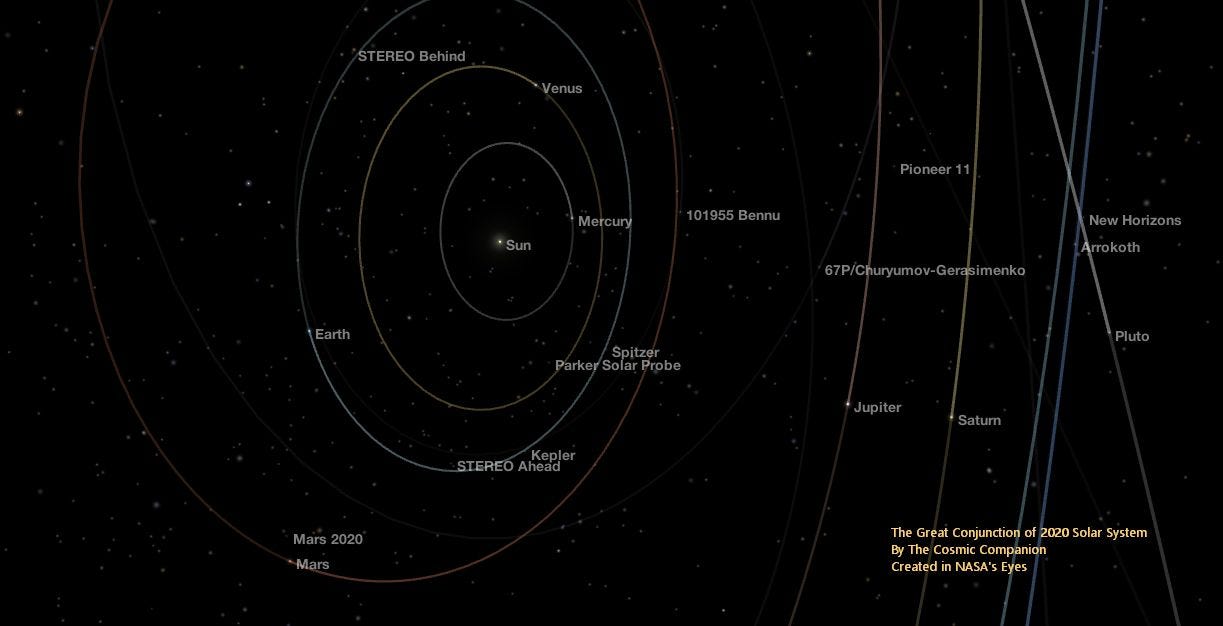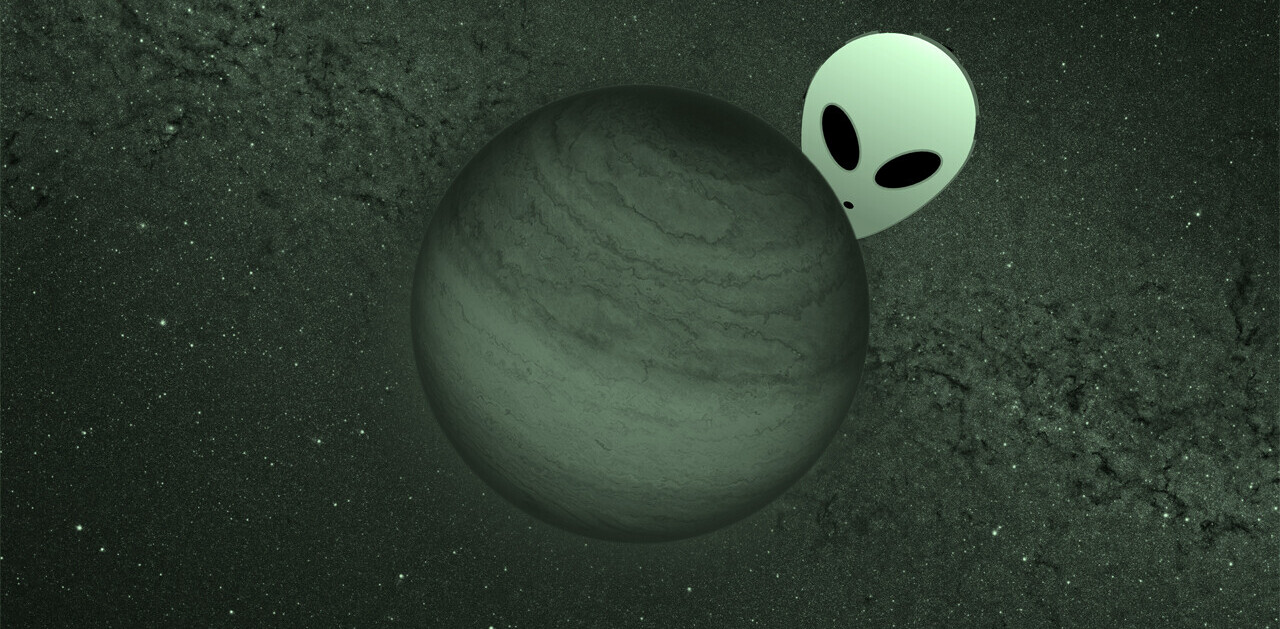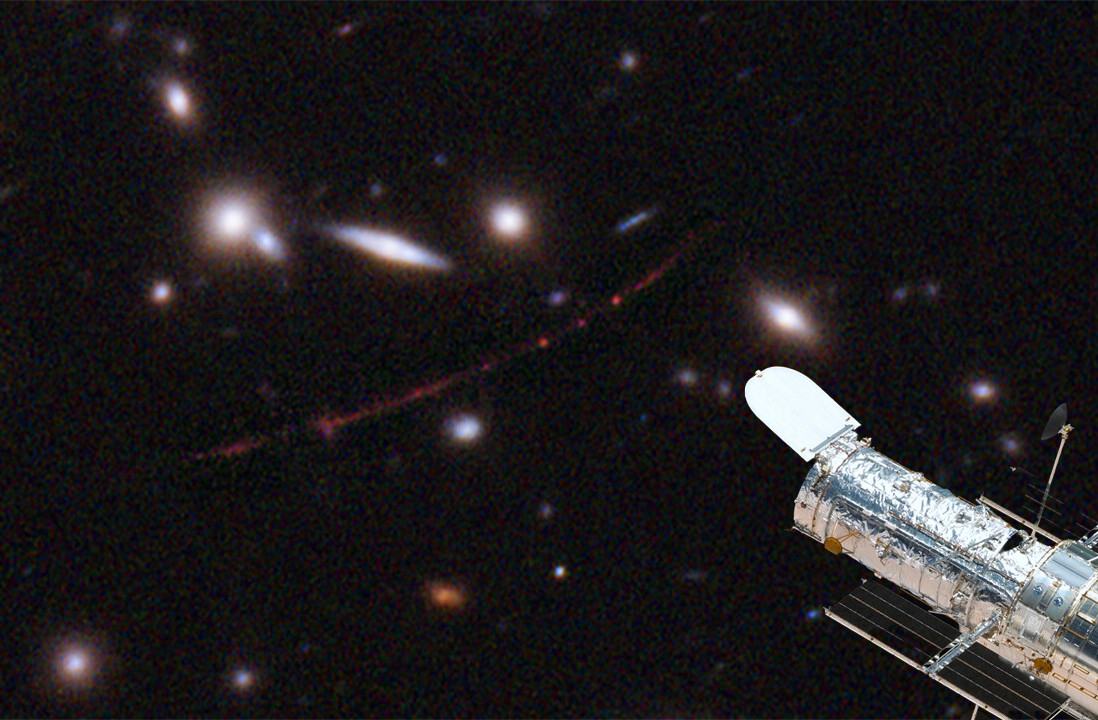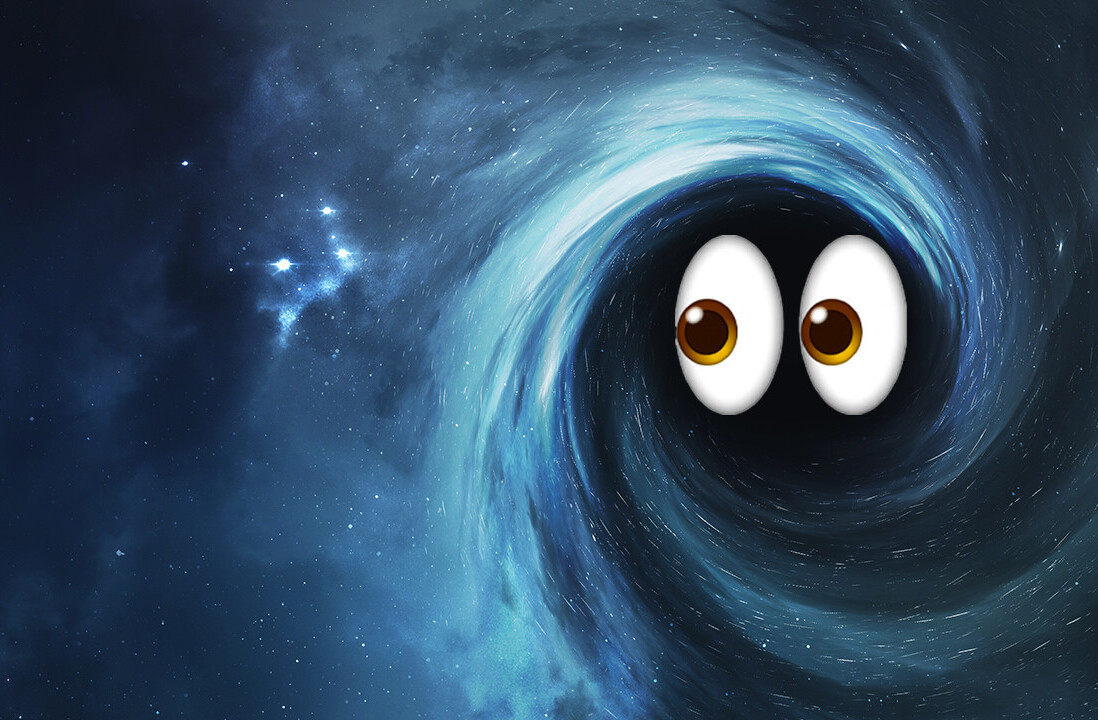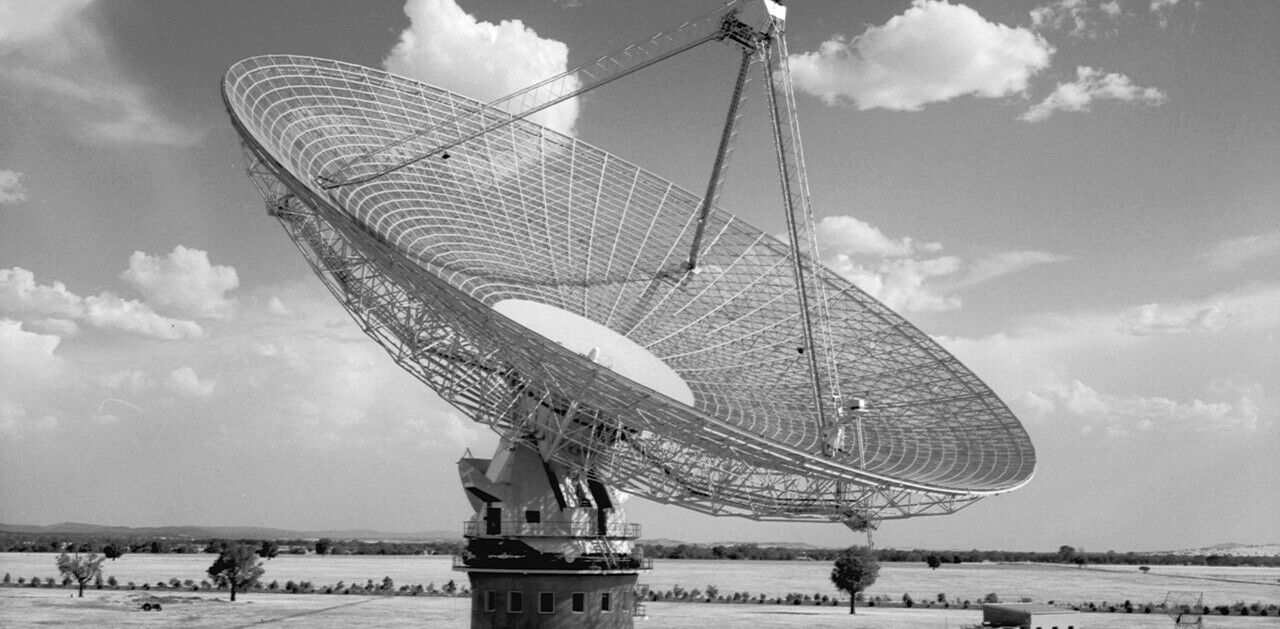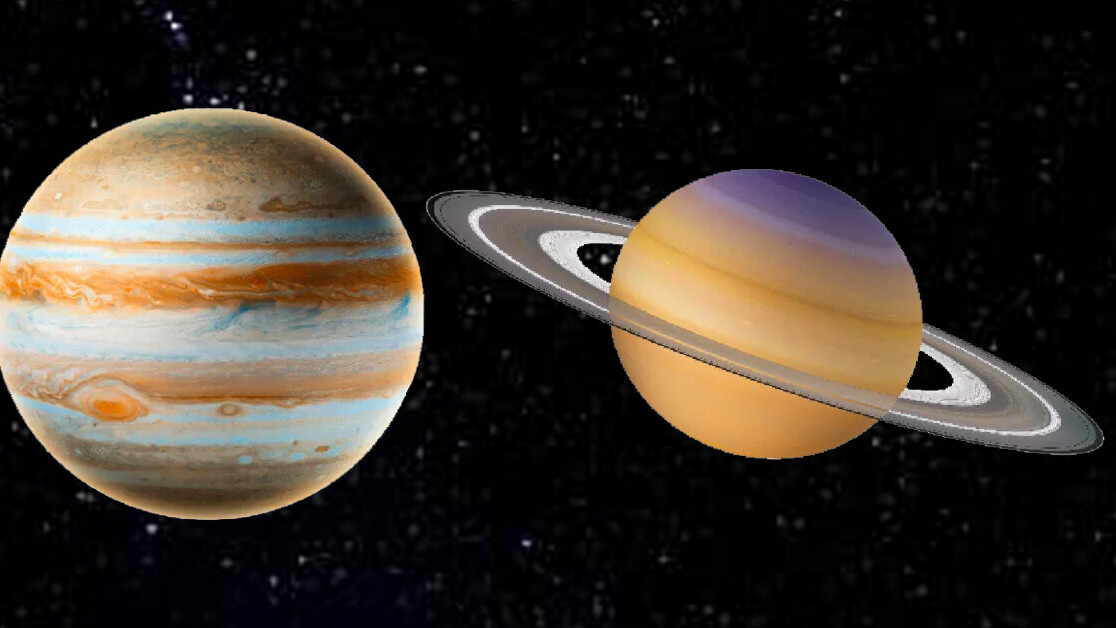
The holiday season holds a special gift, as skygazers on Earth will be treated to a great conjunction of the planets Jupiter and Saturn. On December 21, the two largest planets in our solar system will appear just one-tenth of a degree apart, or one-fifth of the diameter of a full Moon.
This is the closest visible conjunction of the planets seen since the year 1226, when the empire of Genghis Khan reached its end, and the legend of Robin Hood began to take shape.
Come together, right… in about three weeks…
This close encounter of the planetary kind will be easily visible to everyone in the world. The two worlds are already shining brightly in the southwestern sky, soon after sunset. Jupiter and Saturn will draw closer to each other each night until December 21st, when they will appear as a brilliant pair of lights low in the southwestern sky.
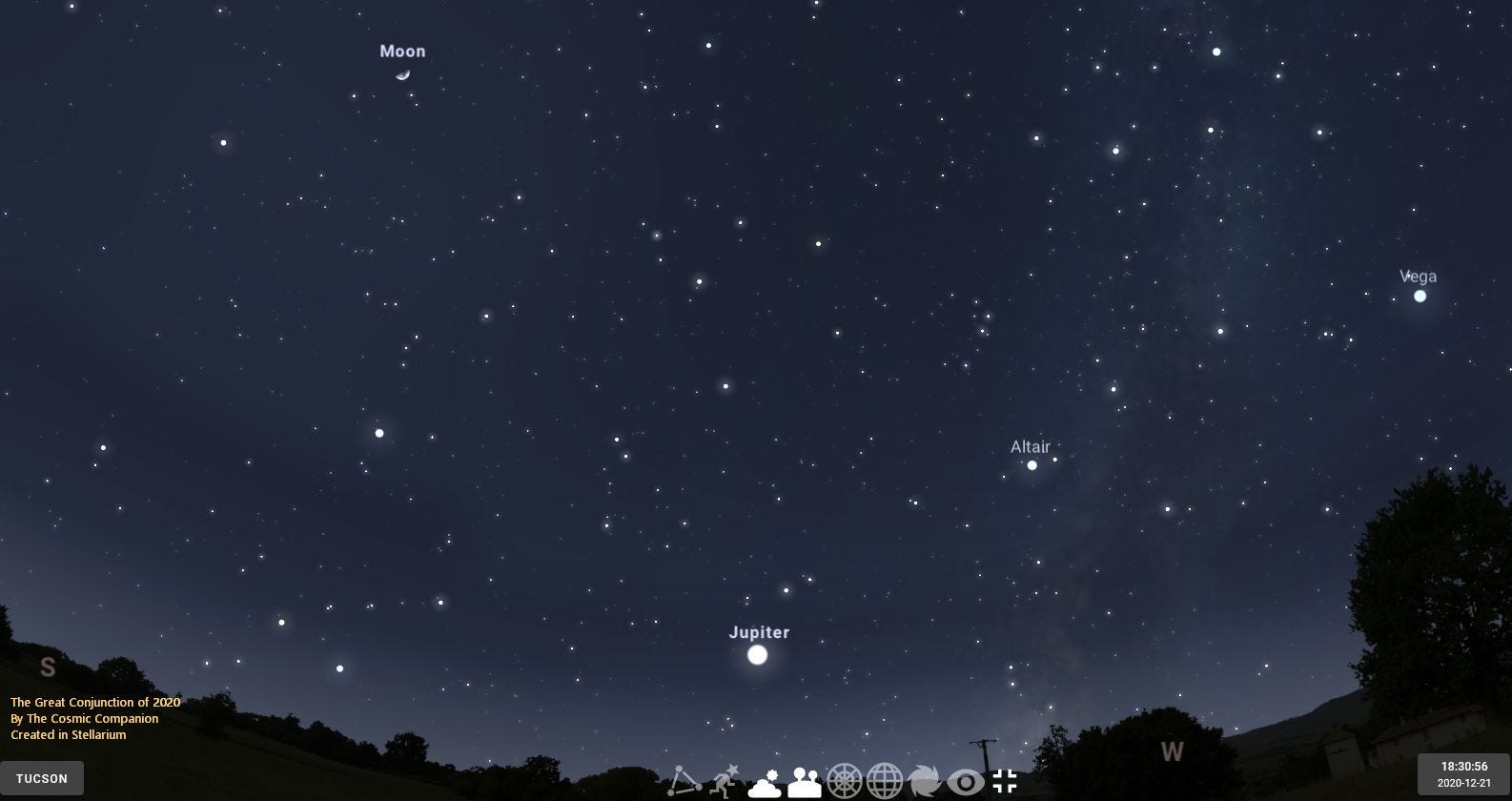
Stargazers using telescopes to view this display will delight in seeing Jupiter and Saturn huddling together, in view of their instruments at the same time. Using binoculars or a backyard telescope, it will not only be possible to see the two largest planets in our solar system together but several of their moons as well in this rare planetary alignment.
“Jupiter and Saturn, Oberon, Miranda and Titania.
Neptune, Titan, stars can frighten…” — Syd Barrett, Astronomy Domine, Pink Floyd
Although these two giants of the Solar System come together once every 20 years or so, this is the closest the two worlds will be seen to each other until March 15, 2080. So, make sure to see it this time around. Clouds and other factors can always affect the viewing of objects in the night sky, so remember to take a look at these two megagiants of the solar System any clear night before or after this close encounter.
Get out in the backyard — we’re all pod people now

This Great Conjunction of Jupiter and Saturn will be easily visible to most people around the globe. The timing of this alignment makes this event a perfect excuse to go outside with the family (bundle up!) and view the Cosmos. Throughout December and into January, the two largest planets in our solar system will shine close to each other as seen from our home world.
All that is needed to see this event is an open view to the southwest (hopefully away from city lights). Jupiter and Saturn are already shining brightly in the southwestern sky, soon after sunset.
Although this event is easily visible without using any equipment, telescopes or binoculars will make this a stunning sight. Jupiter and Saturn are among the easiest, most beautiful sights to see with a backyard instrument. This rare event, seen for the first time in nearly 800 years, makes this as good of a time as any to look up toward the night sky.
With or without a telescope, skygazers should remember to dress warmly where appropriate, and bring a hot beverage and snacks along on any observing session — even in the backyard.
This article was originally published on The Cosmic Companion by James Maynard, founder and publisher of The Cosmic Companion. He is a New England native turned desert rat in Tucson, where he lives with his lovely wife, Nicole, and Max the Cat. You can read this original piece here.
Astronomy News with The Cosmic Companion is also available as a weekly podcast, carried on all major podcast providers. Tune in every Tuesday for updates on the latest astronomy news, and interviews with astronomers and other researchers working to uncover the nature of the Universe.
Get the TNW newsletter
Get the most important tech news in your inbox each week.

